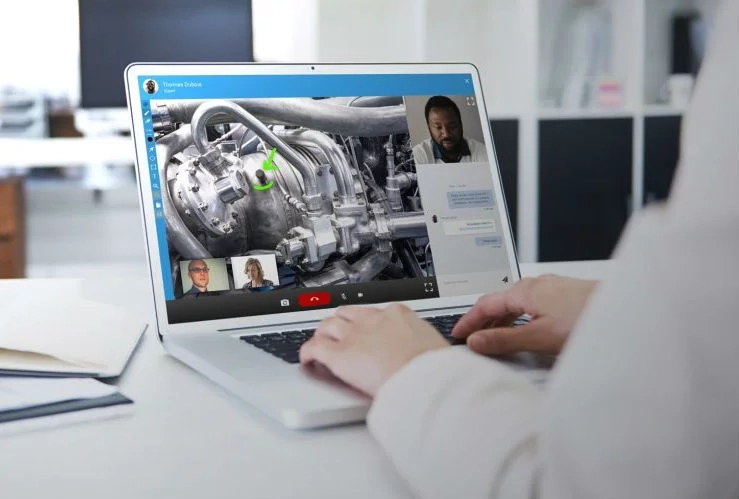How visual assistance can help to protect

Remote visual assistance can help to reduce the impact of various crises such as the one the world is currently facing with the COVID-19 epidemic which continues to spread around the world and already affects more than 200 countries.
In the current context, our work habits have been profoundly affected: travel is strongly discouraged, remote working is encouraged to reduce physical contact. To deal whit these challenges, videoconferencing and remote visual assistance services have been increasingly adopted in businesses of all sizes during the past few weeks.
The world is facing the greatest crisis of this generation. The current epidemic will have a significant impact on our society and our economy for years to come. All these changes will also play a role in the digital transformation of companies and society. Even if 70% of companies had digital transformation in place or were working on it, most companies were not far enough along to reduce the impact of the crisis on processes. Consequently it is now vital for companies to adopt technologies allowing them to ensure operational efficiency and improve the safety of employees and customers.
In a recent Harvard Business Review article on the consequences of the Coronavirus on the global economy, the authors conclude their article with this question: “Consider how you will address the post-crisis world. Can you be part of faster adoption of new technologies, new processes, etc? Can you eventually find advantage in adversity for your company, clients and society?”.
Ensure continuity of service through visual assistance and visual expertise
Since the start of the epidemic, videoconferencing services have been widely used to facilitate medical teleconsultation and remote work. There are also other use cases such as visual assistance and visual expertise which prove to be interesting in this context of crisis. These uses allow companies in sectors of activity such as insurance expertise, industrial services or customer service, to ensure the continuity of their services, while preserving the health of their employees and customers.
Visual assistance to provide remote expertise in industrial services
The industrial services and the utilities sectors are very affected by this epidemic context. In normal times, the breakdown or malfunction of a machine or an infrastructure may require the intervention of a qualified expert. Any lack of action can cause a failure or critical downtime. Thanks to visual assistance, an expert can avoid traveling and assist a technician on site remotely to diagnose the problem and even guide him to solve it.
Visual assistance in customer service, a way to protect your customers and employees
In the distribution sector, this period of social isolation can have a negative impact on customer service, technical and after-sales support activities. Visual assistance can be a way for brands and support centres to continue to offer efficient customer service even when a visit from a technician or customer’s in-store visits are not possible. Thanks to visual assistance, a customer service agent or technician can make a remote diagnosis and guide the customer step-by-step to solve a problem or make an installation. For example, the French national brand Fnac-Darty has had to change its home delivery and TV installation services. Customers now have to install the equipment themselves, but the visual assistance service is offered free of charge to help the customer.
Visual expertise for insurance claims: remote technologies ensure business as usual for claims adjusters
In the insurance claims management sector, visual expertise was already used long before the COVID-19 crisis by certain loss adjustment and claims management firms, but during this period, the switch to remote expertise has accelerated. With visual expertise, activity in this sector should be able to continue almost normally, especially for claims that can be assessed remotely. For this type of expertise, the experts no longer travel, but the “visit” is not cancelled. Wherever possible, non-essential meetings are being replaced with video calls. During the appraisal, the expert guides the policyholder to see the extent of the loss, assess the amount of damage and allow the insurer to propose compensation.
Discover our visual asistance solutions Ask for a demo



